Scientific Reports
3D Documentation
A new belthook from Walpersdorf and a decorated bowl from Franzhausen have been 3D documented, click to see the model!
©Christoph Bieber, ARDIG - Archäologischer Dienst GesmbH, CATA
Textile Analyses
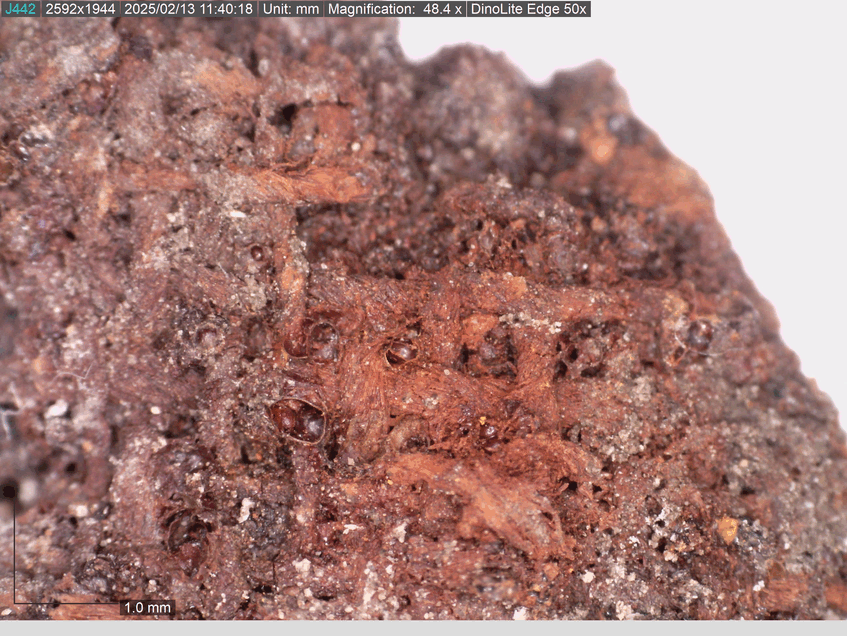
Woven textile outside of a belt fitting ©Kayleigh Saunderson
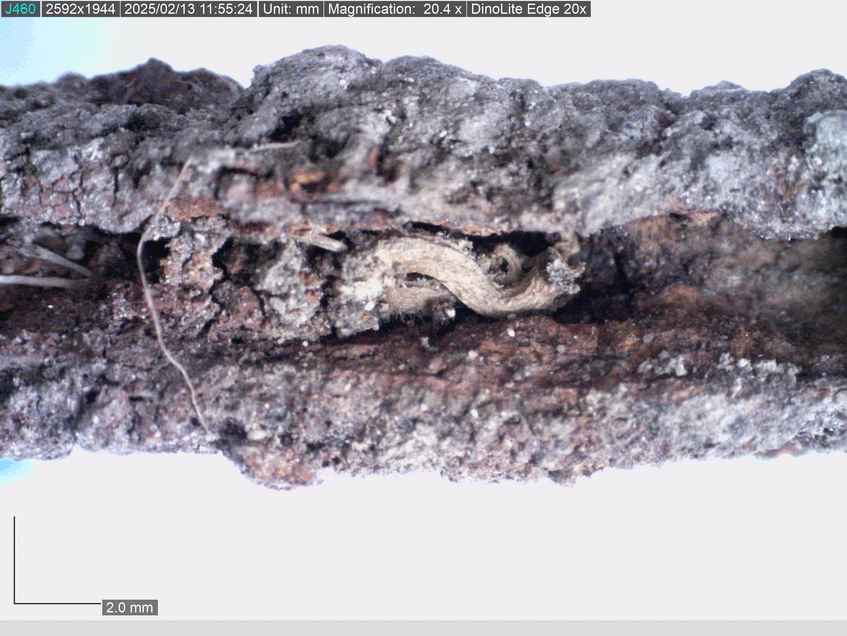
Remains of a sewing thread from a belt ©Kayleigh Saunderson
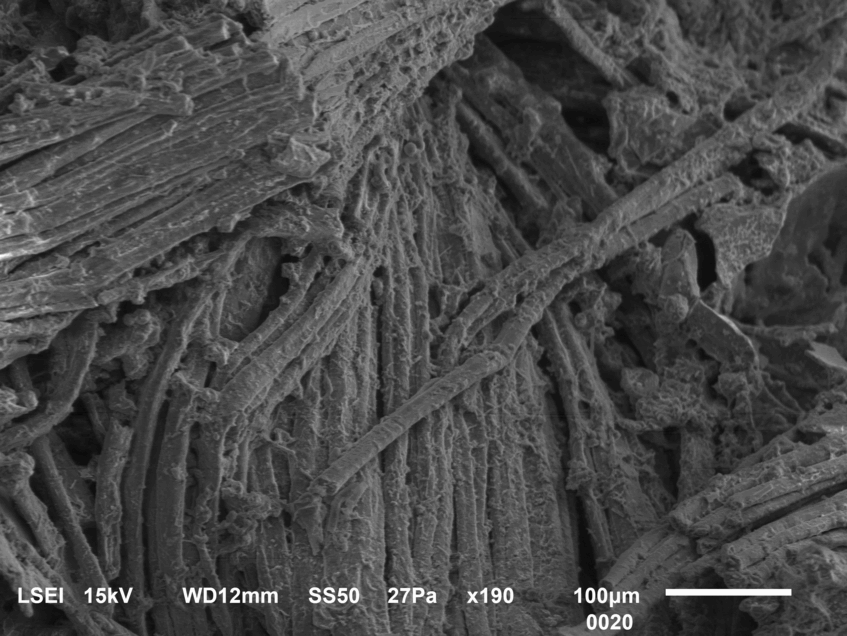
SEM image of the woven fibres, likely wool ©Kayleigh Saunderson
Textile Analyses
Several iron objects from Walpersdorf carry mineralised remains of textiles that lay close to them in the graves. These were analysed using a DinoLite digital microscope, documenting and measuring features such as the weave type, thread diameter, weave density, spin direction, and spin angle. Together with microstratigraphy and the consideration of the context, these characteristics can provide clues on what the textile was once used for and whether it fits into the spectrum typical for the time and region.
For one of these, found outside of a belt, the textile was determined as very typical for the La Tène Period: It is tabby-woven (the simplest weave) with z-spun single yarns and a medium thread diameter and weave density. There were two layers of this textile on the object. Given the location, one could suggest that it was used to wrap the body for the burial at least twice, providing interesting information on burial rituals.
Another textile was found with the belt hook in the same grave: some remains of threads on the inside where the belt leather would have been attached. These threads still exhibit the original course from sewing, meaning that they must have been part of the belt, of which the leather has fully perished. This means that the belt was likely constructed from two pieces of leather sewn together, providing a more stable belt with perhaps appealing seams.
Furthermore, Scanning Electron Miscroscopy was conducted at the Central Research Laboratories at the Natural History Museum Vienna in order to determine the fibre material. Unfortunately, the fibre surfaces these two textiles are already quite degraded and polluted, making a secure determination challenging. However, slight traces of cuticles and round cross-sections suggest that wool is more likely for the woven textile. For the sewing thread, bast fibre, such as flax, nettle, or hemp, is more probable given the traces of nodes.
All in all, these analyses show that even the smallest textile remains can carry interesting insights into rituals and garments.
- TexArchLab Vienna, Kayleigh Saunderson
Facial Reconstructions
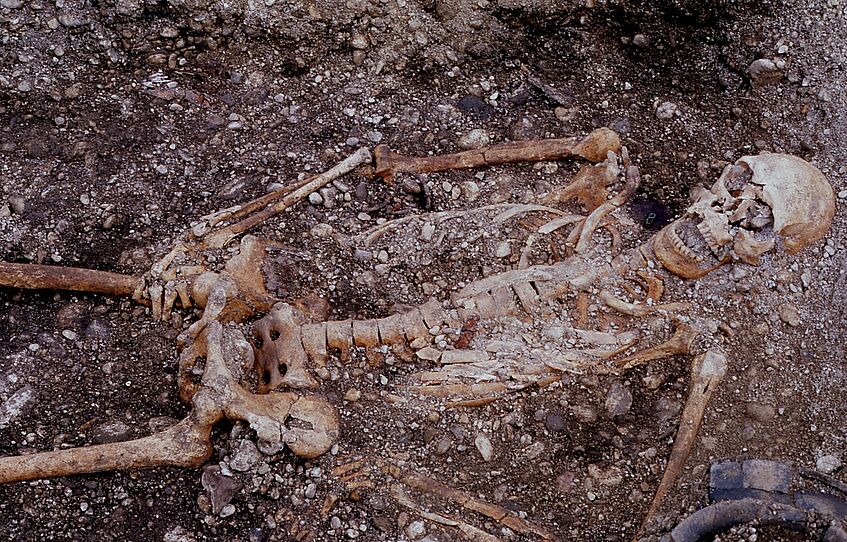

Facial Reconstructions
A photogrammetric approach was used to capture the skulls intended for facial reconstruction. This method makes it possible to create contactless, high-resolution scans of objects. For this purpose, numerous photos are taken, which are transformed into three-dimensional digital replicas using various algorithms.
The 3D model of Walpersdorf grave 144 can be found here.
©Mario Wallner, GeoSphere Austria
At the Hochschule Mittweida (University of Applied Sciences, FOSIL) on basis of the 3D Model of the skull and soft tissue markers according to DeGreef a model of the facial structures has been created as well.
Examination of wood fragments found on arrowheads

© CATA - Thomas Koch Waldner

© VIAS - Universität Wien
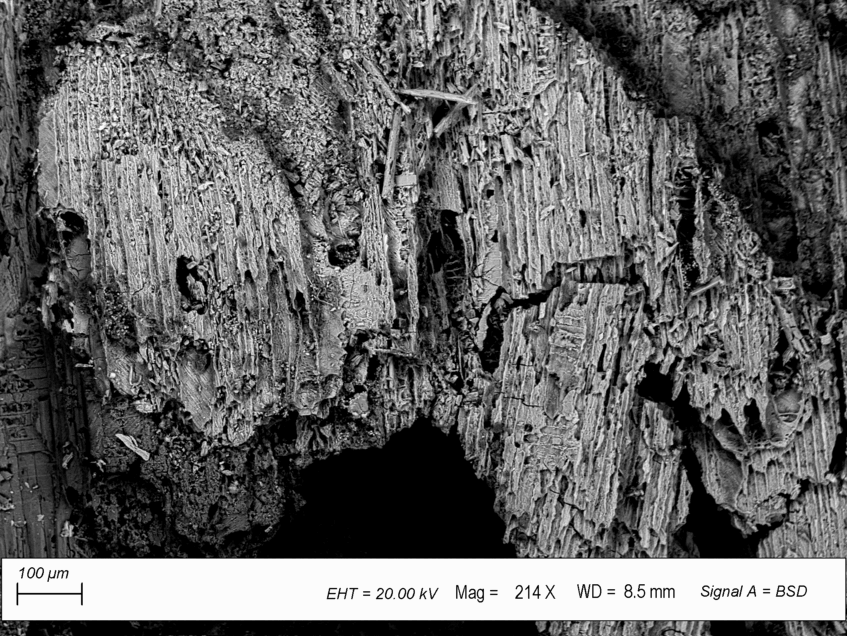
© VIAS - Universität Wien
Examination of wood fragments found on arrowheads
The following wood fragments, found on arrowheads were analysed by the University of Natural Resources and Life Sciences, Vienna (BOKU) by Michael Grabner and his team E. Wächter and S. Nemestothy, together with Mathias Mehofer from the Vienna Institut of Archaeological Science (VIAS) and Thomas Koch Waldner (CATA):
File 326/1998, Industriegelände Inzersdorf-Getzersdorf, KG Walpersdorf, Verf 144, Pl 3, Fn 13
In grave 144 from Walpersdorf, a single arrowhead (Fnr. 8) was observed next to the right shoulder and a bundle of iron arrowheads (Fnr. 13) next to the deceased's right hip. The burial is orientated approximately SW-NE and contains the skeleton of a 30-35-year-old man. A large ceramic vessel was found next to the left elbow, an iron chopping knife and animal bones next to the left hip. By the feet a ceramic fragment and an iron clamp was situated. On the right side (in addition to the arrowheads), a bronze brooch on the shoulder and a perforated iron belt hook could be observed. Organic material could be seen on the arrowheads, which was interpreted as the remains of the arrow shafts.
In a first step, 6 pieces with the best state of preservation were selected and investigated under the REM. It was not possible to determine the exact type of wood.
But based on the assumption that all arrow shafts were made of the same type of wood, the following statements can be made:
1) Clearly dispersed-pored hardwood
2) With the correct interpretation of a ladder-shaped perforation and the presence of aggregate
rays, it can be assumed that the wood species is hazel (Corylus spp.).
